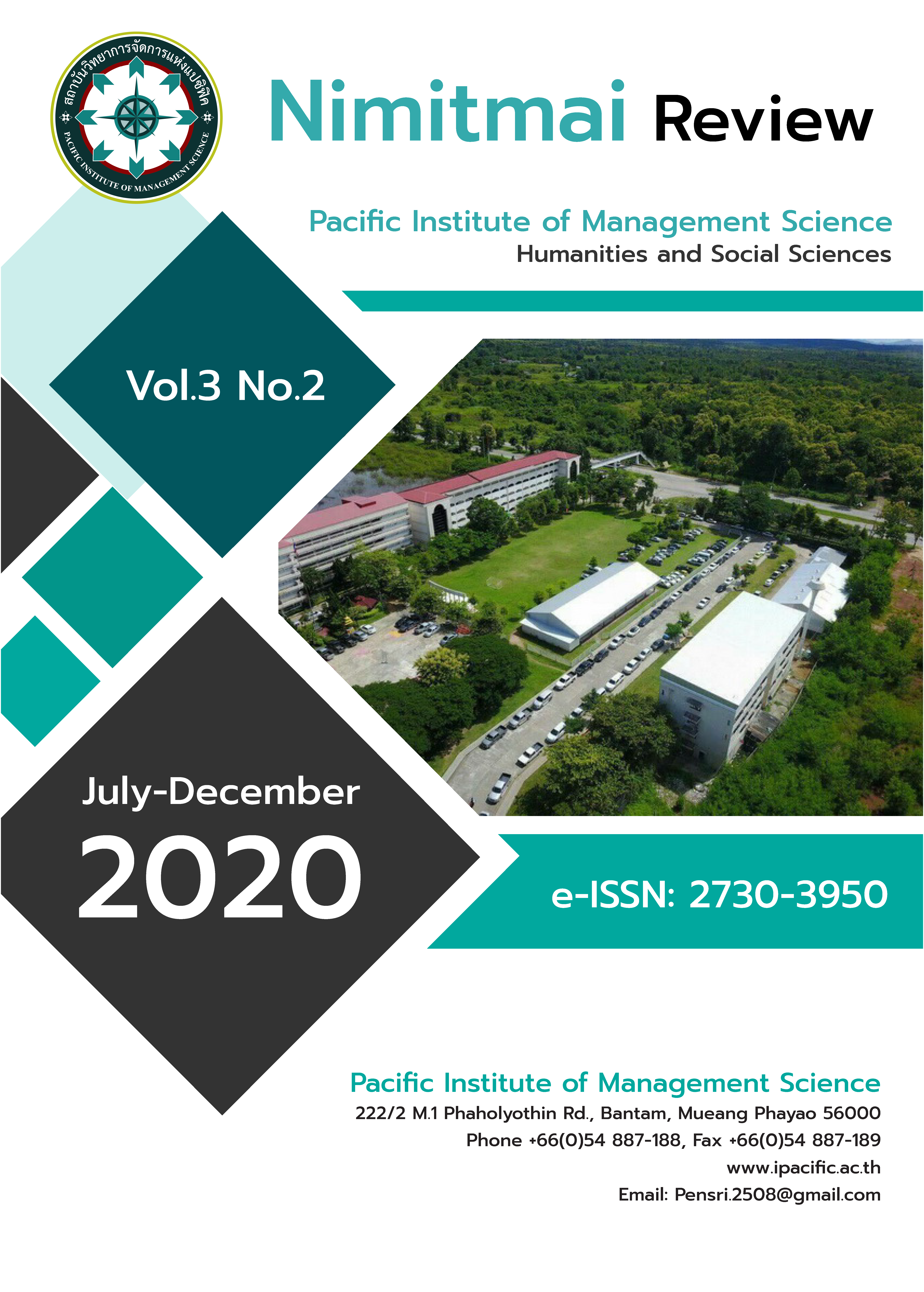MOVING THAILAND’S AGRICULTURE INDUSTRY TO THE NEXT COMPETITIVE LEVEL THROUGH INTERNET OF THINGS (IOTS)
Keywords:
Internet of Things, Thailand, Agriculture, Business Model, Porter Diamond, Theory of Planned BehaviorAbstract
The Internet-of-things (IoT), or alternatively known as the Internet of Everything (IoE), or the Industrial Internet, is a new technology paradigm envisioned as another wave of enabling technologies and business approaches that would revolutionize the world businesses, productions and services. At this juncture, the body of literature still lacks of a framework that can provide guidance to the policymakers and the investors, at both national, and company-levels, for generating competitive advantages. Thailand and its agricultural industry are the focus of this research. To fill the gaps, three research objectives are raised, (1) to suggest a systems framework capable to illuminate how IoT investments in the agricultural industry can lead to competitive advantage at national level, (2) to develop a generic business model configuration that can provide an explicitly understandable base for the investors and owners to comprehend and form the logics of how to actually benefit from the IoT investment, and (3) to draw some implications and suggest significant propositions to illuminate some important hindering and enabling factors that influence the investments of IoTs in agricultural industry. Case study approach and purposively sampling are used for the data collection, which targeted the Thailand IoT Association and a smart hydroponic farm located in Chiang Rai. The research results also in a generic business model canvas (BMC) that could provide to the agricultural industry an intellectual base for IoT investments.
References
Accorsi, R., Bortolini, M., Baruffaldi, G., Pilati, F. and Ferrari, E. (2017). Internet-of-Things Paradigm in Food Supply Chains Control and Management. Procedia Manufacturing, 11, pp. 889-895.
Ajzen, I. (1991). The theory of planned behavior. Organizational Behavior and Human Decision Processes, 50, pp. 179-211.
Biloslavo, R., Bagnoli, C. and Edgar, D. (2018). An Eco-Critical Perspective on Business Models: The Value Triangle as an Approach to Closing the Sustainability Gap. Journal of Cleaner Production, 174, pp. 746-762.
Blank, S. (2013). Why the Lean Start-up Changes Everything. Harvard Business Review, 91(5), pp.23-33.
Boyes, H. (2017). A Security Framework for Cyber-Physical Systems, WMG CSC Working Paper, Coventry, University of Warwick, 2017.
Boyes, H., Hallaq, B., Cunningham, J. and Watson, T. (2018). The Industrial Internet of Things (IIoT): An Analysis Framework. Computers in Industry, 101, pp. 1-12.
Chesbrough, H.W. (2007). Business Model Innovation: It’s Not Just about Technology Anymore. Strategy Leadership, 35(6), pp. 12-17.
Christensen, C., Bartman, T. and Van Bever, D. (2016). The Hard Truth about Business Model Innovation. MIT Sloan Management, 58(1), pp. 31-40.
Dobbs, M.E. (2014). Guidelines for Applying Porter’s Five Forces Framework: A Set of Industry Analysis Templates. Competitiveness Review, 24(1), pp. 32-45.
Garrido, E., Gomez, J., Maicas, J.P. and Orcos, R. (2014). The Institution-based View of Strategy: How to Measure It. BRQ Business Research Quarterly, 17, pp. 82-101.
Haaker, T., Bouwman, H., Janssen, W., and de Reuver, M. (2017). Business Model Stress Testing: A Practical Approach to Test the Robustness of a Business Model. Futures, 89, pp. 14-25.
Jones, J.W. et al. (2017). Toward a New Generation of Agricultural System Data, Models, and Knowledge Products: State of Agricultural Systems Science. Agricultural Systems, 155, pp. 269-288.
Kane, G.C., Palmer, D., Phillips, A.N., Kiron, D. and Buckley, N. (2015). Strategy, Not Technology, Drives Digital Transformation. MIT Sloan Management Review, July, pp. 3-25.
Kim, W.C. and Mauborgne, R. (2005). Value Innovation: A Leap into the Blue Ocean. Journal of Business Strategy, 26(4), pp. 22-28.
Kull, A.J., Mena, J.A., and Korschun, D. (2016). A Resource-based View of Stakeholder Marketing. Journal of Business Research, 69, pp. 5553-5560.
Kumar, A. and Sharma, A. (2018). Socio-Sentic Framework for Sustainable Agricultural Governance. Sustainable Computing: Informatics and Systems. https:doi/org/10.1016/j.suscom.2018.08.006.
Laasch, O. (2018). An Actor-Network Perspective on Business Models: How Being Responsible Led to Incremental but Pervasive Change. Long Range Planning. https://doi.org/10.1016/j.lrp.2018.04.002.
Latour, B. (1996). On Actor-Network Theory: A Few Clarifications. Soziale Welt, 47(4), pp. 369-381.
Metallo, C., Agrifoglio, R., Schiavone, F. and Mueller, J. (2018). Understanding Business Model in the Internet of Things Industry. Technological Forecasting & Social Change, https://doi.org/10.1016/j.techfore.2018.01.020.
Ning, H., Liu, H., Ma, J., Yang, L.T. and Huang, R. (2016). Cybermatics: Cyber-Physical-Social- Thinking Hyperspace based Science and Technology. Future Generation Computer Systems, 56, pp. 504-522.
Osterwalder, A. (2004). The Business Model Ontology – A Proposition in a Design Science
Approach. Institutd’InformatiqueetOrganisation. Dissertation 173. University of Lausanne, Switzerland.
Osterwalder, A. and Pigneur, Y. (2009). Business Model Generation: A Handbook for Visionaries, Game Changes, and Challenges. UK: John Wiley & Sons.
Pera, R., Occhiocupo, N. and Clarke, J. (2016). Motives and Resources for Value Co-Creation in a Multi-Stakeholder Ecosystem: A Managerial Perspective. Journal of Business Research, 69, pp. 4033- 4041.Retrieved from http://www.fao.org/3/ag089e/AG089E04.htm, on 10 May, 2019.
Pham, X. and Stack, M. (2017). How Data Analytics is Transforming Agriculture. Kelly School of Business. Https://doi.org/10.1016/j.bushor.2017.09.01.
Poapongsakorn, N. and Anuchitworawong, C. (2019). The Decline and Recovery of Thai Agriculture: Causes, Responses, Prospects, and Challenges. Part II.
Porter, M.E. (1980). Competitive Strategy: Techniques for Analyzing Industries and Competitors. New York, NY: The Free Press.
Porter, M.E. and Heppelmann, J. (2015). How Smart, Connected Products are Transforming Companies. Harvard Business Review, 93(10), pp. 96-114.
Pricop, O.C. (2012). Critical Aspects in the Strategic Management Theory. Procedia – Social and Behavioral Sciences, 58, pp. 98-107.
Ray, P.P. (2016). A Survey on Internet of Things Architectures. Journal of King Saud University–Computer and Information Sciences, http://doi.org/10.1016/j.jksuci.2016.10.003.



